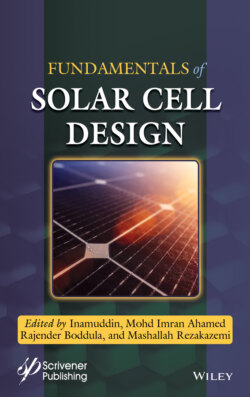Читать книгу Fundamentals of Solar Cell Design - Rajender Boddula - Страница 47
2.5 Conclusion and Future Aspects
ОглавлениеNanoscience and nanotechnology provide the potential to enhance energy efficiency through materials engineering by tuning its optical and electrical properties. The very thin and optically thick absorbers can make the revolution for larger light absorption and hence high efficiency in plasmonic solar cells. Plasmoinc effect of metallic nanostructures is important in nanophotonics that permit a confinement and manipulation of sunlight at nanoscale. Solar cell technology should be more cheap, eco-friendly, and highly efficient to generate clean electricity. Plasmonic nanostructures such as metal nanoparticle (Ag, Au, Al, and Cu) or thin film (ultra metallic film) can serve as light harvesting antennas in solar energy conversion devices. Plasmonic nanostructures can be can be used directly as photoactive layer or integrated in integrating with existed solar cell technology to increase the absorption and efficiency. There are main three ways to use plasmonic nanostructures in PV device as the top of the surface, integration with photoactive layer, or at the back side of PV cell. Plasmonic PV cells provide enhanced PV properties with various mechanisms such as more trapping of sunlight, injection of hot electrons, enhancement in local electromagnetic (e-m) field, and light scattering by local surface plasmons. They have been achieved efficiency from lower to high about 33.5%. There are still many challenges to develop plasmonic solar cell technology at commercial applications. The properties such as absorption, work function, and plasmonic resonance frequency in metal nanostructures as well as semiconductor energy band gap are important parameters to get better performance in plasmonic solar cells. The interface between plasmonic nanostructure and photoactive material decides the charge and energy transfer mechanism. Tuning all the optical and electrical properties and interface engineering are challenging task and thus it required sophisticated fabrication and characterization tools. A better understanding on the surface plasmon effects would make this technology more efficient for developing next generation solar cells as well as clean fuels.
